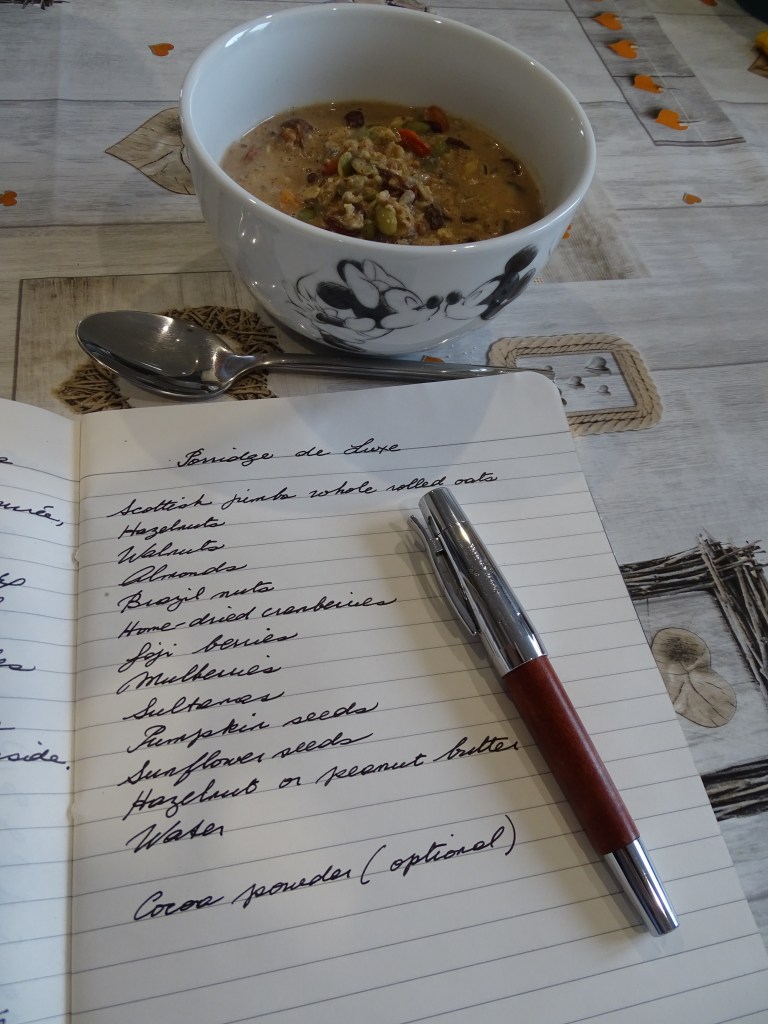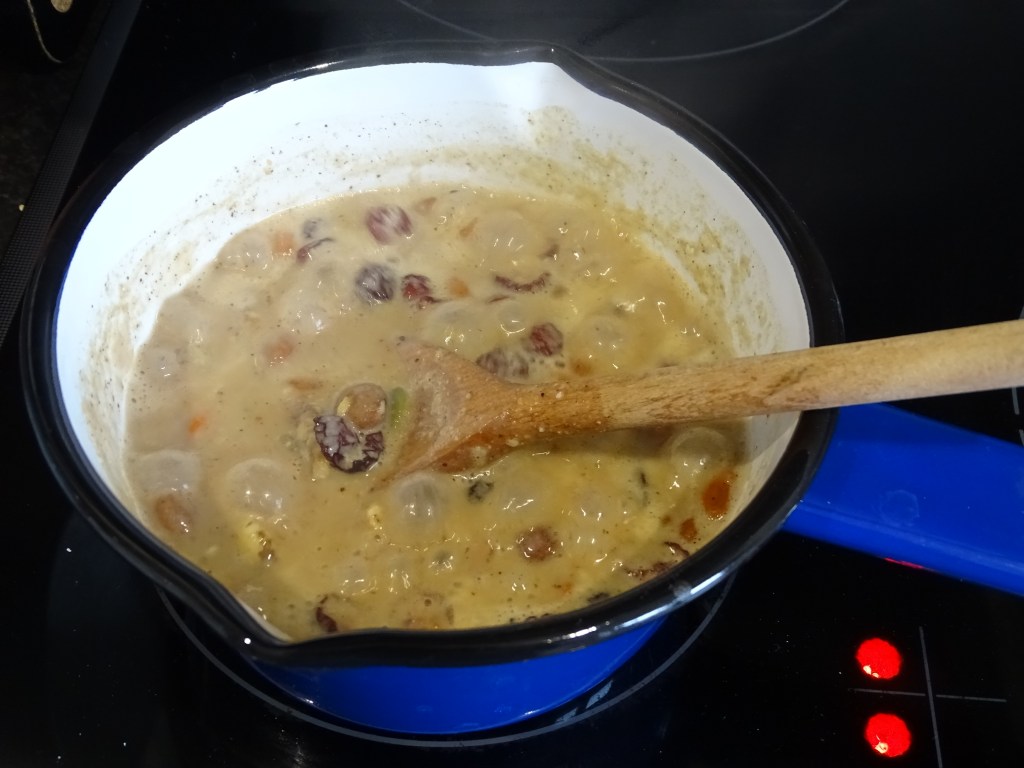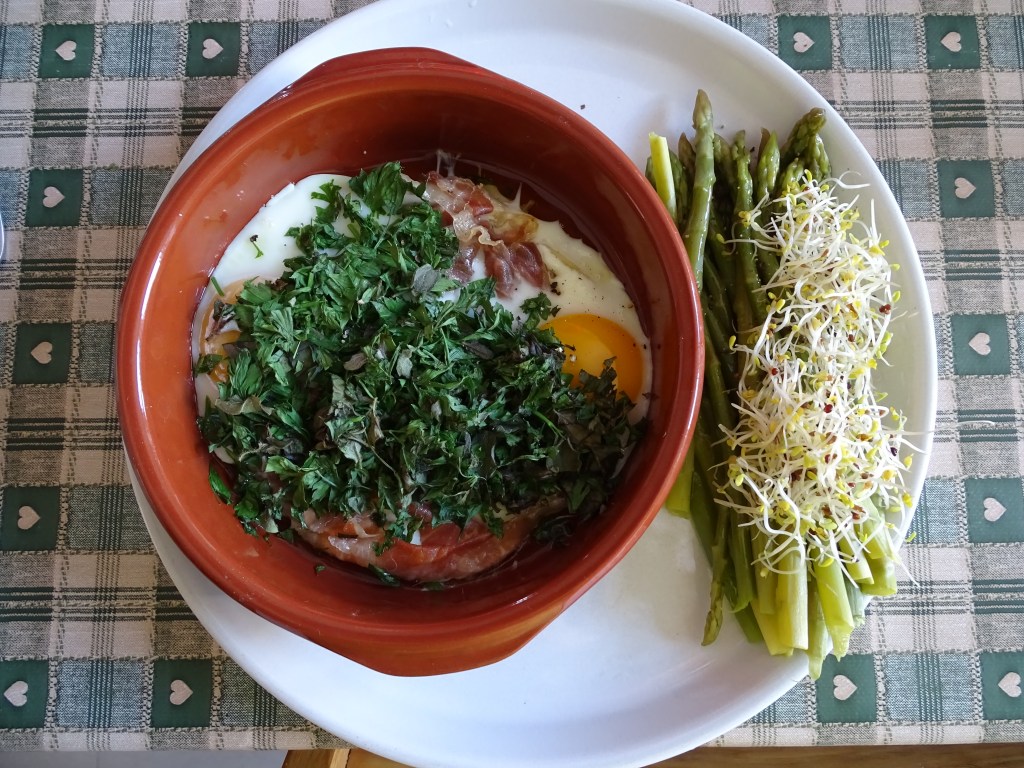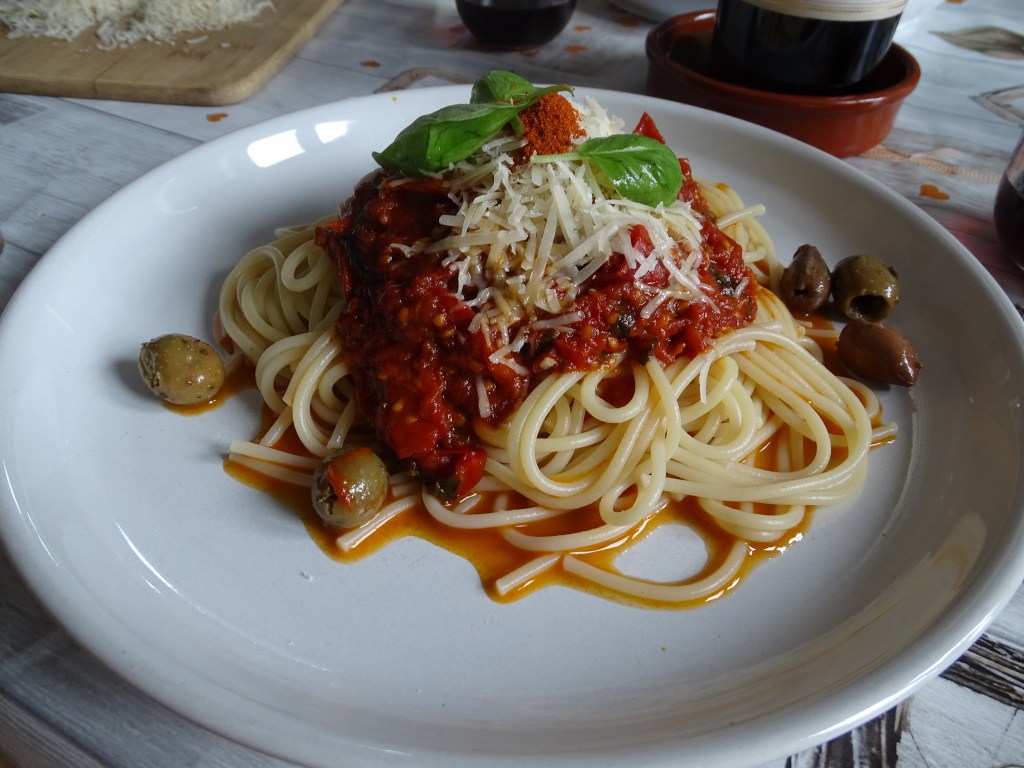(23 April 2024)

One of the local pubs is displaying white flags with the red cross of Saint George. I suddenly feel the need to be in an international environment and can’t think of a better place than Chocolate Notes, owned by a globetrotting viol player who employs a Flemish and a French assistant. I’ve never much liked Saint George’s Day in England. The cynic in me scoffs at this date so conveniently coinciding with Shakespeare’s birthday. Moreover, I dislike the jingoism it brings out of the woodwork; just as I wince at the sea of Union Jacks waving to the tune of Rule, Britannia at the Last Night of the Proms. England has precious little to boast about at the moment.
In Italy, every city honours its patron saint with a day off. Here, the patron saint of an entire country is marked chiefly by English flags here and there and an over-consumption of beer. The bank holiday stinginess of this country extends to its patron saint. But then it would be un-Protestant to draw too much attention to a saint – or to have an extra day off work, for that matter.
The figure of Saint George has never been simpatico to me. Even as a child, I found the image of a clearly distressed dragon being pierced by the lance of a knight very disturbing. Like all Western-raised children, I was told fairy tales in which the dragon was the evil monster and the knight who slew him a hero to be cheered and rewarded. The innate contrarian in me has always felt sorry for the hapless dragon. From what I could see, here was a poor animal being slaughtered for merely doing what its nature and instincts commanded: to breathe fire and eat humans. Killing dragons made no more sense to me than hunting down a shark for attacking a human or harrying a bear for scaring humans on what is, by the laws of nature, non-human territory.
The dragon’s ability to spew fire added to its fascination in my eyes.
In Chinese folklore, the dragon is very much a male energy. In English, on the other hand, the word “dragon” is often used as an insult for a strong-minded, strong-willed woman. In the English collective subconscious, does Saint George kill a mouthy, headstrong woman? In any case, he slays a beautiful, powerful creature and, worse, he destroys a symbol of magic.
My interest in dragons was developed further when I started studying Qi Gong. The first form I learnt is called Dragon and Tiger and it is still one of my favourites. I practise it at least once a week. In this form, the Tiger represents the liver, the dragon the lungs. It’s an exercise aimed at strengthening the functions of both organs and focusses on improving your breathing technique, and learning to channel your breath into every cell in your body. One of the movements is beautifully and suggestively called Dragon soars to the heavens and brings back the pearl. Interpret that as you wish, but it’s a highly energising movement. In another form, swimming dragon is graceful and undulating. It is your friend, your ally, a magical creature to treat with respect, to treasure and to harness – not destroy.
In Chinese folklore, dragons are good figures. Their snake-like, agile form is much more elegant than that of their lizard-like Celtic and Germanic counterparts. Similarly, snakes are valued for their grace, their agility and their wisdom. They are not the insidious, evil demons Western cultures have inherited from Judeo-Christian teachings.
My Chinese doctor tells me that in Chinese folklore, snakes are small – and female – dragons.
What if Saint George hadn’t killed the dragon? If he is a saint, an enlightened man, why does he not, instead, tame the dragon? We would then be so much more in awe of him.
In my mind’s eye, I picture an alternative Saint George. He approaches the dragon and speaks to it sweetly. He charms the dragon and inspires its respect and undying devotion. The dragon willingly becomes the saint’s devoted servant. And so magic is not destroyed but harnessed.
I imagine the dragon lying at Saint George’s feet, the man’s hand stroking the creature’s large head. Now that’s a Saint George I could admire.
Jan is behind the counter when I open the door to Chocolate Notes. The warmth of the shop is comforting. We haven’t had spring in Norwich yet. It feels as though winter woke up late this year and is now flexing its muscles. Late April, and I’m still in my down coat, hat and gloves.
Chocolate Notes is a Saint George-free area, a nationalism-free zone. It has become something of a sanctuary to me.
“Oh, it’s so nice and toasty here,” I say, thinking that this coffee/classical music shop is warmer than my draughty flat where Howard and I comment several times a day on how cold we are and I still type with lambswool fingerless gloves on.
“We try,” Jan replies, “for as long as Fiamma can afford the energy bills.”
Yes, the UK’s obscenely high energy bills.
Jan looks at me with a friendly half-smile. “You look like you need some TLC. I’ve got just the thing for you. Find a seat and I’ll bring it to you.”
I join my hands together and give a small nod of gratitude. Sometimes, friends are not the people with whom you socialise but those whose workplace you frequent. “May I make a music request?”
“Of course.”
“Do you have the recording of Lang Lang called Dragon Songs?”
By the time I’ve draped my down coat over the back of my chair and taken my notepad and Faber Castell out of my rucksack, the piano notes of the first track of Dragon Songs are gushing out through the speakers and Jan appears with a tray.
“You’re a true star,” I say. “What have you brought me?”
“Something I’ve concocted: pear tea with cinammon and cardamom.”
I take a sip. The sweetness of the pear is complemented by the spice. Jan’s right. It’s just what I need.
SPICED PEAR TEA
Ingredients (makes 2 cups):
❧ Two reasonably ripe pears
❧ 1 cinnamon stick
❧ 3-4 green cardamom pods, lightly crushed
❧ 1 litre water
Slice or chop the pears into a saucepan, add the spice and the water. Bring to the boil then simmer gently for 20 minutes or so. Strain before serving. You can add a spoonful of honey if you have a sweet tooth.






















